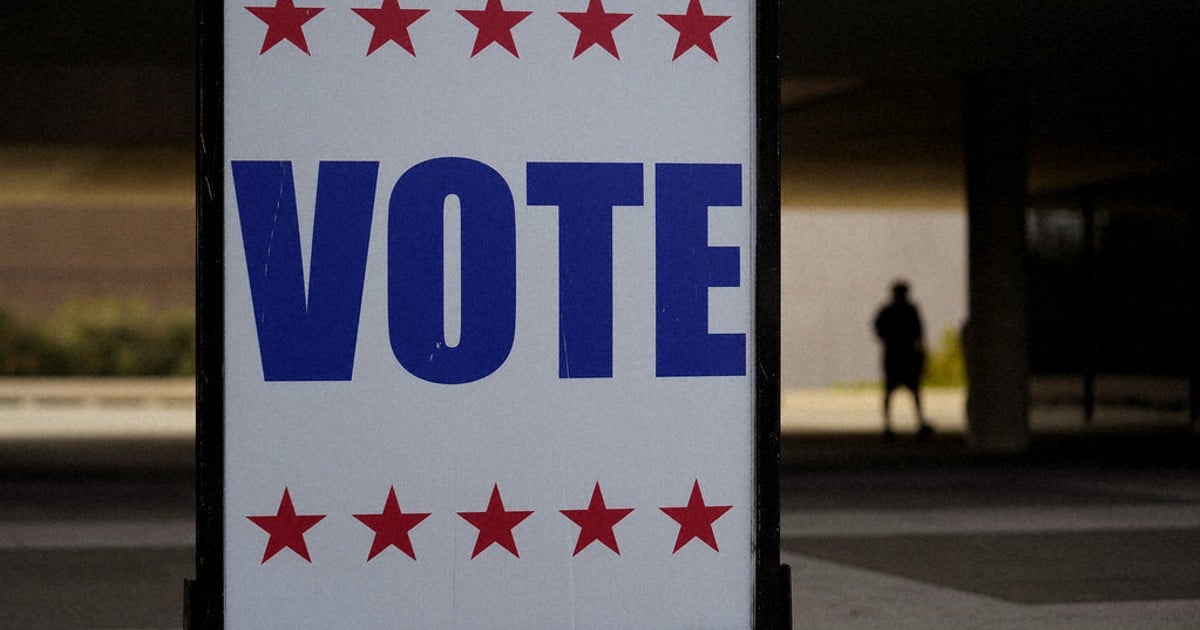PHOENIX (AP) – The 2024 presidential election is drawing an unusually robust field of independent, third party and long shot candidates hoping to capitalize on Americans’ ambivalence and frustration over a likely rematch between Democrat Joe Biden and Republican Donald Trump.



lol if you think I’ve forgotten about the sewage-chugging fest that was the 45th presidency, you’re out of your fucking mind. I’m not thrilled with Biden’s age, but I am dramatically less fucking thrilled with the conservative’s current shitbag choice. Show me a 3rd party with eye-wateringly powerful support from Democrats, and I’ll certainly consider it. But until then, for as long as conservatives are mouth-frothingly determined to usher in fascism unheralded, I won’t be swayed.
Yup, a bunch of people want to push third party candidates.
They either ignore the fact that under FPtP (First Past the Post), a third party candidate is always a spoiler candidate, or they’ve been paid off by conservatives to weaken the chances of Democrats doing the bare minimum and holding on to power that they should have been actually using.
Which bring up the second evil of FPtP, as long as conservatives are batshit crazy and openly embracing fascism, all the Democrats have to do, it not be conservatives… And sadly, that’s a very high bar for them.
The fix to all of this is, of course, to ditch FPtP voting. My current favorite replacement is called STAR. It’s about the single best single winner voting system ever created. (another link)
For anyone else who finds voting systems fascinating, there’s an entire wiki devoted to just that. I’ll admit to having read most of it over the last few years. I might need better hobbies.
tl;dr Our system of government sucks and math says you need to vote for Biden.
I hate it, too, but them’s the facts.
Too bad so many people suck at math.
I blame No Child Left Behind.
I was never gonna vote for him, but if I had considered, genocide is my mine in the sand.
That’s the neat part: You get genocide no matter what you choose. Even if you vote third party you’ll have a “president” you “elected” that kills people all over the globe. Even Mr. Hope & Change came up with the double-tap.
Welcome to being a citizen of a dying empire. Maybe in a 100 years your children will get to vote for someone they actually like, after this decrepit, undemocratic government splinters and falls on its face like all the other presidential republics in this hemisphere
Republicans are pushing third party candidates HARD. If Biden doesn’t get 270 electoral votes the Republican House appoints the president. https://en.wikipedia.org/wiki/Contingent_election
I recall learning about STAR a while ago, and I agree that both that FPtP sucks ass, and STAR is vastly better. All we’d need to do is get it instituted to replace FPtP, which is the real hurdle.
I may be off here because this is the first I’m reading about STAR, but it seems worse than instant-runoff ranked-choice voting because of the “top two candidates based on first results are the final two candidates”. It seems like ranked-choice but broken to keep the States in a two party system.
For instance: Let’s say there are 4 parties: blue, red, green, and yellow. Let’s say the majority of people have red (27%) and blue (26%) as their top pick, so those are automatically #1 and #2. Green is a close third (25%). The remainder (21%) vote for yellow, then green, then red, then blue. STAR would say every other candidate is eliminated except Red and Blue, and then redistribute the other votes. Instant-runoff would say: eliminate yellow and redistribute based off their second choice. In this example, all those votes would switch to green and green would become first. Then blue would be eliminated, those votes redistributed, and then you’d have to see what would happen. Instant-runoff to me allows for the opportunity for a meeting in the middle - everyone potentially agreeing on their second choice; while STAR seems like it will just continue to encourage people to put their primary pick up top.
You actually have it backwards.
Ranked Choice (otherwise known as Instant Runnoff Voting) is the worse system by far.
It comes down to the mechanics of both.
See, IRV is just a bunch of small FPtP elections all on one ballot. This causes issues and extremely odd behaviors, that can result in the Condorcet winner, actually losing the election.
IRV also has spoiler effects and horrible counting procedure.
Did you know that to count an IRV election, you need to transport all ballots to a centralized location? It literally cannot be counted at the polling location due to the way the counting (and recounting) works.
Also, IRV is one of the only voting systems ever invented to fail the Monotonicity criterion, i.e. ranking a candidate lower can sometimes lead to them winning the election. The likelihood of this happening approaches 100% the more candidates you have on the ballot.
In Contrast, with STAR, You rate each candidate independently of the others on the ballot. You can have multiple candidates rated at the same level.
This independent rating removes the spoiler effect completely, because you’re never forced to vote A instead of B.
So, you’ve rated all your candidates on a scale of 0-5, then the counting happens. It can be done at the polling location. Each polling location reports the number of ballots cast, and the total scores of each candidate.
This gives you a lot of data about each polling location. Particularly, you can average out those scores. This lets you know how the total population feels about any given candidate, not just how their direct supporters feel.
Anyway, the total scores for the election are added up, and the top two candidates are then put into an automatic runoff.
This automatic runoff is done ballot by ballot, if A is rated higher on that ballot than B, the final vote goes to A. If they’re rated the same, then the final vote is tallied as “No Preference” and here’s the important part, the No Preference votes are also reported in the final count.
So in your example with four candidates, You have to ask more. Do Red voters also like Green? Do Blue voters like Yellow? That actually matters in the final count.
It’s not just “my top pick didn’t win, so now it’s down to my less favorite” (Although that does happen as well).
The best way to look at the results of a STAR election is to average out the scores. So, the candidates with a 3.8 and a 4.1 end up in the automatic runoff, while the candidates who got 2.5 and a 3.6 are dropped from the election.
Then each ballot is checked, and if the candidate with a 4.1 does better on that ballot, they get the vote.
The actual averages will likely be different. Districts that lean heavily one direction or the other might see a candidate with a very high average, districts that are more competitive will see winning averages in the 2s and 3s.
This would also change the strategy around getting campaigning. Less negativity and mud slinging, more focus on issues and driving engagement.
You can’t win on just being “Not the other guy”.
Big thank you for writing all that out. There’s a lot of dynamics here I am not knowledgeable about, so I appreciate you providing links as well. I’ll have to read more on this before getting back to you. After your explanation, I have a much better understanding of the intended value of STAR. My gut is still saying that STAR will not allow 3rd parties into a polarized political environment, but I have no data to back that up. I just feel that people will vote 0 for the candidate they least want, 5 for the one they want, and 3 for the one they’re ambivalent about and that will devolve STAR to a two-round ranked choice that favors the two biggest political parties. Again, that’s definitely possibly me just not fully understanding the system. I’ll have to read more, crunch numbers, and see what numbers others have crunched and get back to you. Definitely very interesting and I love the concept of rating politicians independent of each other.
The main reason why STAR and other Cardinal voting systems can help grow third parties, is they don’t punish the voter for supporting them.
That 3 rating that you give someone, You can give a bunch of them and not change the 5 rating that you also gave.
One of the most common attacks against a voting system is called Cloning. You take a somewhat popular candidate and run someone who has almost exactly the same platform. Both then suffer from splitting the vote between the two.
STAR and other Cardinal systems are immune to this attack. There’s no vote splitting, because the (initial) votes are completely independent of each other.
Things can get a bit odd if two clone candidates make it to the final two, but even then, they theoretically have the same platform, and the voting public should be mostly happy with either one.
But that’s where the tallied “No Preference” votes come in, to tell the winner just how little they’re preferred over their closest rival.
Or you ditch direct presidential elections altogether, vote for congress with a proportional vote and let them decide who’s gonna be president. That way you’ll force the (now more than 2) parties to form coalitions and cooperate.
I don’t get this when his opponent is less than 4 years younger than him.
How large is this eye-watering powerful support among Democrats? 50 percent? 80 percent? 100 percent? Who will in the election in those cases?